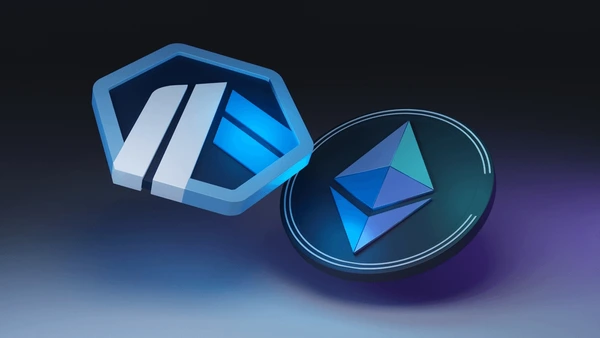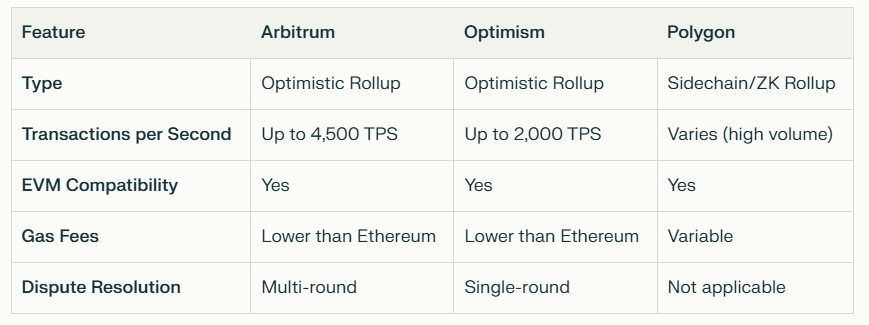
As blockchain technology continues to evolve, scalability remains a significant challenge, particularly for Ethereum. Layer 2 solutions have emerged to address these issues, with Arbitrum standing out due to its unique features and capabilities. This blog delves into the specifics of Arbitrum, comparing it with other prominent Layer 2 solutions, and highlights why it is an excellent choice for blockchain developers and businesses.
Understanding Layer 2 Solutions
Layer 2 solutions are secondary frameworks built atop the main blockchain (Layer 1) to improve transaction speed and reduce costs. They process transactions off the main chain, alleviating congestion and enhancing the overall efficiency of the blockchain network. The most common types of Layer 2 solutions include:
State Channels: Allow participants to conduct transactions off-chain and only settle final results on-chain.
Sidechains: Independent blockchains that run parallel to the main chain, allowing for different consensus mechanisms.
Rollups: Bundle multiple transactions into a single one before submitting them to the main chain. This category includes optimistic rollups, which assume transactions are valid unless proven otherwise.
What is Arbitrum?
Arbitrum is a Layer 2 scaling solution developed by Offchain Labs that utilizes optimistic rollups to improve Ethereum’s transaction throughput. Launched in May 2021, Arbitrum has quickly gained traction among developers due to its compatibility with Ethereum’s existing infrastructure and its ability to significantly reduce transaction fees while increasing processing speed.
Key Features of Arbitrum
1. Optimistic Rollups: Arbitrum processes transactions off-chain in batches, submitting only the necessary data to Ethereum. This method reduces gas fees and speeds up transaction times.
2. EVM Compatibility: Developers can use existing Ethereum tools and languages like Solidity without needing extensive modifications. This compatibility makes it easier for projects to migrate or integrate with Arbitrum.
3. Dispute Resolution Mechanism: While optimistic rollups assume all transactions are valid, Arbitrum includes a multi-round dispute resolution process that allows users to challenge invalid transactions efficiently.
4. High Throughput: Arbitrum can handle up to 4,500 transactions per second (TPS), significantly higher than Ethereum’s current capacity.
5. Interoperability: It allows for easy asset transfers between its Layer 2 environment and the Ethereum mainnet, facilitating a more flexible transaction ecosystem.
Comparing Arbitrum with Other Layer 2 Solutions
To understand why Arbitrum stands out, it’s essential to compare it with other leading Layer 2 solutions such as Optimism and Polygon.

Performance Metrics
Transaction Speed: Arbitrum’s ability to process up to 4,500 TPS makes it a robust choice for applications requiring high throughput.
Cost Efficiency: By reducing gas fees significantly compared to Ethereum’s mainnet, Arbitrum offers a cost-effective solution for developers and businesses alike.
Developer Support: The ease of migration from Ethereum makes Arbitrum attractive for developers looking for scalability without sacrificing familiarity.
Advantages of Choosing Arbitrum
1. Cost Savings: Businesses can save on transaction fees while maintaining high performance.
2. Developer-Friendly Environment: With EVM compatibility, developers can easily transition their projects without learning new programming languages or tools.
3. Robust Security Model: The multi-round dispute resolution enhances security by ensuring that invalid transactions can be effectively challenged and corrected.
4. Growing Ecosystem: Since its launch, Arbitrum has attracted numerous decentralized applications (dApps) and protocols, creating a vibrant ecosystem that fosters innovation.
Use Cases for Businesses
Arbitrum is particularly well-suited for various business applications:
Decentralized Finance (DeFi): With its high throughput and low fees, DeFi protocols can operate efficiently on Arbitrum.
Gaming Applications: Fast transaction speeds enhance user experience in gaming environments where quick interactions are crucial.
NFT Marketplaces: Lower costs make it feasible for creators and collectors to engage in NFT trading without prohibitive fees.
Challenges Facing Arbitrum
Despite its advantages, there are challenges that potential users should consider:
Challenge Periods: The time required for users to dispute transactions may lead to delays in resolving issues.
Competition from Other Solutions: Other Layer 2 solutions like Polygon offer unique features that may appeal to specific use cases or developer preferences.
What are the main advantages of using Arbitrum over other Layer 2 solutions
Arbitrum has emerged as a leading Layer 2 solution for Ethereum, offering several advantages over other competing solutions. Here are the main benefits of using Arbitrum:
1. Optimistic Rollups for Efficiency
Arbitrum utilizes optimistic rollups, which allow it to bundle multiple transactions off-chain and submit them to the Ethereum mainnet as a single batch. This significantly reduces congestion and lowers transaction fees compared to processing each transaction individually on Ethereum’s Layer 1. By assuming transactions are valid by default, Arbitrum can process them more quickly, enhancing overall efficiency.
2. High Throughput
Arbitrum is designed to handle a high volume of transactions, reportedly processing up to 4,500 transactions per second (TPS). This capability makes it particularly suitable for decentralized applications (dApps) that require fast and reliable transaction processing, such as gaming and DeFi platforms.
3. Lower Transaction Costs
One of the most compelling advantages of Arbitrum is its ability to significantly reduce gas fees. By processing transactions off-chain and bundling them, users can enjoy lower costs compared to both Ethereum’s mainnet and other Layer 2 solutions like Optimism and Polygon. This cost-effectiveness is crucial for businesses looking to operate efficiently in the blockchain space.
4. EVM Compatibility
Arbitrum maintains high compatibility with the Ethereum Virtual Machine (EVM), allowing developers to easily migrate their existing dApps without needing extensive modifications. This feature ensures that projects can leverage Arbitrum’s capabilities while retaining the familiar Ethereum development environment, making it an attractive option for developers.
5. Robust Security Model
Arbitrum inherits the security features of Ethereum, ensuring that all transactions processed through its network are secured by Ethereum’s consensus mechanism. Additionally, its dispute resolution mechanism allows users to challenge potentially invalid transactions, thus maintaining integrity within the network.
6. Growing Ecosystem
Since its launch, Arbitrum has attracted a wide range of popular dApps and protocols, including Uniswap and Aave. This growing ecosystem not only enhances its utility but also fosters innovation within the platform, making it an appealing choice for developers looking to build or expand their projects.
7. Decentralized Governance
Arbitrum plans to implement a governance model where ARB token holders can participate in decision-making processes regarding network upgrades and changes. This decentralization promotes community involvement and aligns with the broader ethos of blockchain technology.
Conclusion
Arbitrum presents a compelling option for blockchain developers looking for an efficient Layer 2 solution that combines high throughput with low costs while maintaining compatibility with existing Ethereum infrastructure. Its unique features make it suitable for a wide range of applications from DeFi to gaming.
For businesses seeking reliable arbitrum development services on this platform, partnering with experienced teams is crucial. If you’re considering building on Arbitrum or want to explore its potential further, reach out to Codezeros for expert guidance in navigating this innovative landscape. Their expertise can help you leverage the full benefits of Arbitrum in your blockchain projects.








